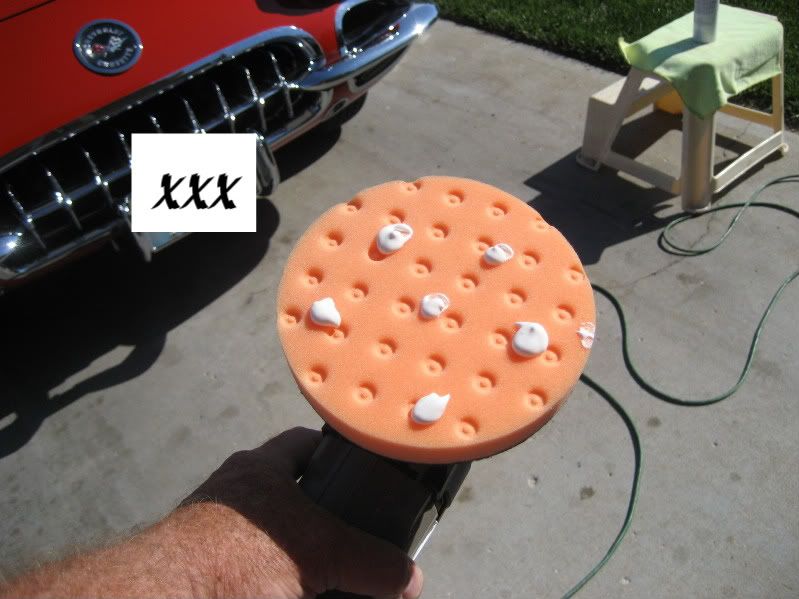The washing and claying will remove the FMJ. The only problem seems to occur when certain silicone products are used prior to polishing, that are very difficult to fully remove from the paint (like washing Vaseline from your hands). The ONLY issue in that regard could have been your choice of quick detailer you used during the claying. When you wipe the surface clean you are, in a sense, applying the quick detailer to the paint. Certain quick detailers could interfere with certain polishes, although the effect will likely be negligible.
You did likely overload the pad with product which can lead to numerous issues, including product smears, clumping, dusting, or drying out, or a reduction in cutting power. The goal of priming the pad is to introduce some abrasives to the pad in the most uniform manner as well as to ensure that same exact lubricant used in the polish is used through out the pad. With non-diminishing abrasive polishes such as M205/M105/M86 this becomes more vital for optimal performance.
After allowing the polish and lubricants to permeate the pad, clean the pad's surface thoroughly to remove the excess polish, but leave the pad slightly damp with lubricant.
Keep in mind that M105 and M205 (as well as M86) where developed for rotary use, so you can use the products with forced rotation, but it will change the dynamics.
Because products using the 'non-diminishing abrasives' will remain functional through out the buffing cycle, the longer we work the product efficiently, the greater the potential for correction to occur. To make the ultra fine abrasives work in M105, it is likely that a drier lubricant had to be used.
When used by a rotary, the original M105 had a working time of 10-15 seconds, maybe a little more or less. You could work it longer but in general you would sacrifice cut and scour the paint surface. With a rotary, instead of working one application 30 seconds to achieve the desired result, it is far more efficient (more cut and a better finish) by making two 15 second applications.
The advantage of a dual action polisher is that it will not produce as much heat in the pad or on the surface of the paint. As temperatures increase, the lubricants evaporate quicker, as on a rotary. Using a forced rotation is going to increase the temperature on the paint's surface and in the pad, which will dry out the lubricants faster.
Since a DA runs the paint/pad cooler, it is possible to run M105 longer (while maintaining a great finish) and possibly get more defect removal per application then with a rotary polisher. Because a DA application is going to take longer, it doesn't necessary mean you are going to save time.
By using the forced rotation, it is possible that the extra heat generated by the pad/paint dried out the lubricant faster.
Excessive application of product can cause the polish to dry faster and reduce cutting properties, particularly with non-diminishing abrasives.
A typical misconception is that adding more product to the pad will increase the working time. This can work on certain diminishing abrasive polishes, because the solids (abrasives) in break down, leaving behind the lubricant. Think Menzerna SIP, which uses traditional abrasives and has a very thick, long lasting lubricant. Excessive application of that product can make removing all of the lubricant very difficult. The abrasives break down (although much slower) and the excess lubricant remains.
With diminishing abrasive technology, the abrasives, in essence, will last longer the the lubricant it is held in. The opposite of what occurs with traditional diminishing abrasives. That is why overworking the product leaves behind dry clumps that can be very difficult to remove (vs. lubricant that can be difficult to remove). In this case adding excessive polish isn't just adding more lubricant, but also adding more abrasives.
It depends if the dust is on the working surface itself or the working area adjacent to the working area. The dust is going to be a combination of the abrasives in the polish and the removed paint. If the working area gets a little dusting, I don't worry about it too much, particularity if I am going to be using subsequent polishing steps that will further refine the surface.
The dust is going to be as aggressive as the abrasives are when they are expelled. Keep in mind that most traditional polishes feature diminishing abrasives, so they can 'dust' at various sizes and cuts. Compounds, or aggressive polishes, can have drier lubricants that dust faster, and leave behind abrasives that are still pretty rough. M105 has very fine abrasives that the dust is going to comparably less aggressive.
So how much concern you place on the dust is going to be based on the aggressiveness of the dust and what your goals are at the time.
If you are compounding the car, or aggressively polishing, the goals of defect removal are more important then the absolute best gloss (which is a becomes more a priority in subsequent, finer steps). However if you have a lot dust on the surface after compounding, it is a good idea pressure rinse the vehicle. You do not want dust on the car, in the trim, or in a vent, to land on the paint as you are polishing it with a finer step.
If you are in the process of final polishing the car, dusting becomes more of an issue, because the goal is to reduce any marring. At this point any aggressive dust could comprise the final results. Most final polishes use a pretty thick lubricant which reduces dusting and allows the abrasives to fully dissolve (in the case of traditional diminishing abrasives) to bring the paint to the highest shine.
Part of detailing is trouble shooting, please let me know how it turns out!!


